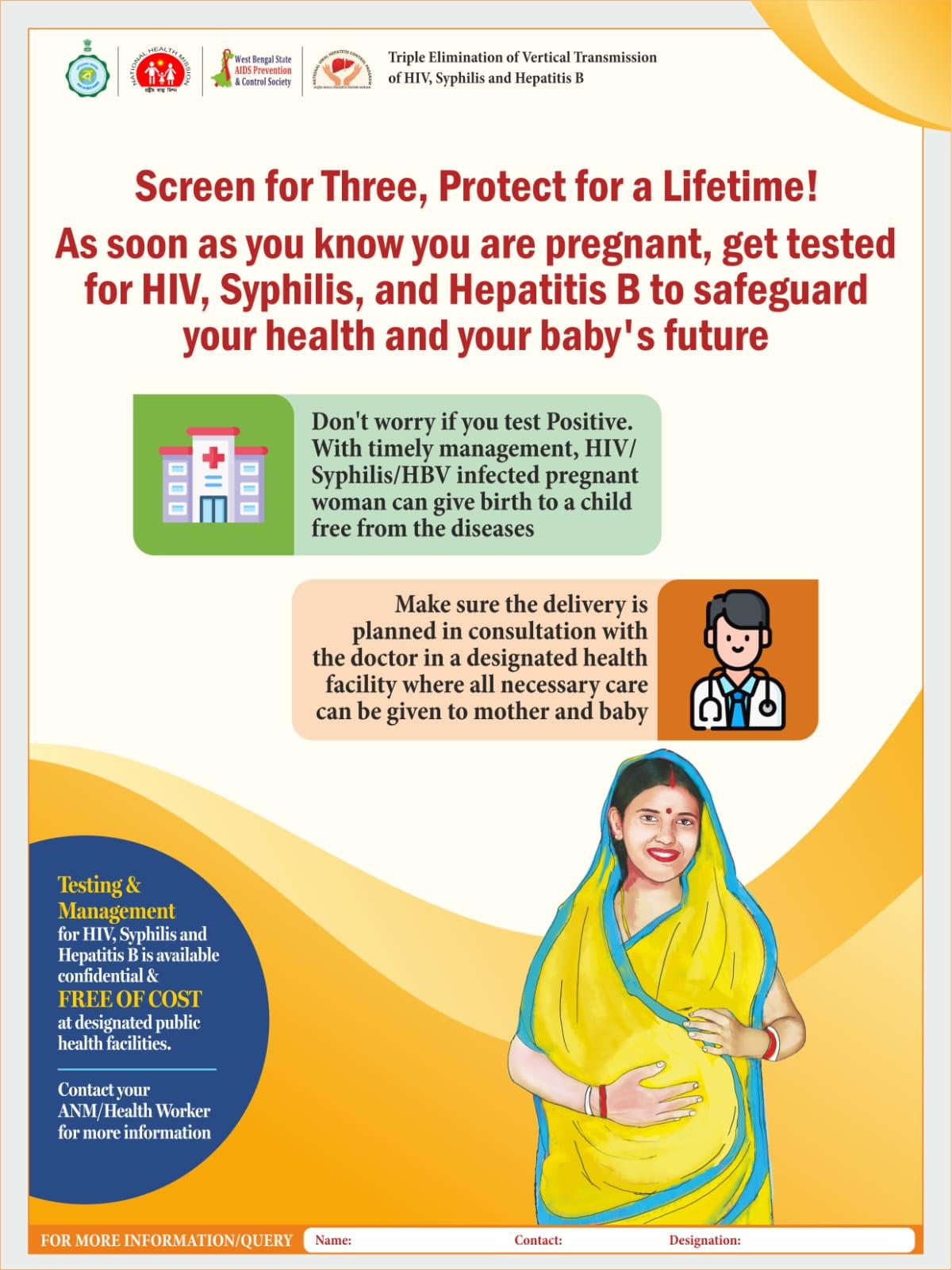In an ambitious goal to eliminate mother-to-child transmission of HIV, syphilis and Hepatitis B by 2026 the West Bengal government, has recently begun a pilot project, believed to be the first-of-its kind in the country. The ‘Triple Elimination’ initiative has been launched in partnership with the William J Clinton Foundation (WJCF) and the World Health Organization, and is being spearheaded by the State Health Department.
Why triple elimination?
All three diseases — HIV, syphilis and Hepatitis B — are infectious, and their mode of transmission is similar, sexual and vertical (mother-to-child) transmission. All three diseases have a long incubation period and also have a lifetime impact on infected persons. There is evidence of increased mortality and morbidity rates in infected mothers and infants with these diseases. The lower the age of a child with Hepatitis B, for instance, the higher the chances of their getting chronic liver diseases; birth with congenital syphilis can lead to deformities in the baby.
“The USP of this initiative is that two major disease control programmes, the HIV control programme along with the STI/RTI (sexually transmitted/reproductive tract infections) and the Viral Hepatitis control programme are now no longer functioning in silos. They are being dealt with together to address maternal and child health as whole. Four verticals (HIV, STIs, Hepatitis and maternal/child health) are now acting in unison to prevent infections in newborns,” said Pallav Bhattacharya, State Task Force member of the Triple Elimination initiative, adding that this was the first such medical initiative to address and stop the transmission of three diseases through a holistic approach.

How is West Bengal going about it?
The government has formed a State Task Force (STF) and a Technical Advisory group (TAG) to initiate this project. It was first launched in April 2024, as a pilot in four districts: Coochbehar, Rampurhat, South 24 Parganas and Diamond Harbour. Once the intervention showed a positive response in these four areas, in March 2025, the project was launched across all 23 districts in the State.
Rahul Biswas, State Coordinating Officer for Triple Elimination, said that the government was positive that complete elimination would be successful by 2026. “Our foundations are fairly sound. This is why we scaled up the initiative across the whole State.”
Though started by the government health department, the initiative now includes private medical facilities for a comprehensible and inclusive approach towards elimination.

A poster of the Triple Elimination initiative
| Photo Credit:
Special Arrangement
How does it work?
Every pregnant woman is screened for all three infections during the anti-natal period. This includes both high-risk groups and the general population. If any woman tests positive, she is linked to the concerned medical departments to initiate treatment and counselling.
The programme then ensures that the delivery is intuitional and there is no transmission of the infection during childbirth.
The Hepatitis B Zero dose vaccine is compulsory for every child born in India under the Universal Immunisation Programme’s schedule, and, additionally, the newborn of a Hepatitis B positive mother gets another dose of HBIG (Hepatitis B Immune Globulin) injection within the first 24 hours of birth.

Combating challenges
While discussing challenges faced during the implementation of the project, Dr. Bhattacharya pointed out that accessibility of services was a major challenge at the grassroots level. “We have decentralised syphilis services. Earlier, these services were all concentrated in district hospitals, but now we have moved them to block levels to improve accessibility. The management of HIV positive pregnant women is also done at the block level now. Deliveries of HIV and Hepatitis positive women were only happening at higher medical centres. Now, we have decentralised that to the block level as well,” he said.
The issue of pregnant women having to travel long distances to access services has also now been addressed through a hyperlocal approach. There are also district-level nodal officers to addressescalated situations at the initial stages to stop any stigmatisation.
The stakeholders of the initiative also pointed out that extensive capacity-building at the grassroots level and improving of counselling has helped strengthen the initiative. Empowering front-line workers has helped in better outreach.
What happens next?
Dr. Bhattacharya said he hoped the success of this initiative would help in modelling it across the country to help in eliminating newborn infections of these three diseases. With the National AIDS Control Organisation and the National Health Mission being in the loop throughout the various phases of this project, national-level implementation should be considered in the coming years, experts said .
Published – March 31, 2025 12:03 pm IST
























